#13 April 1743
Text




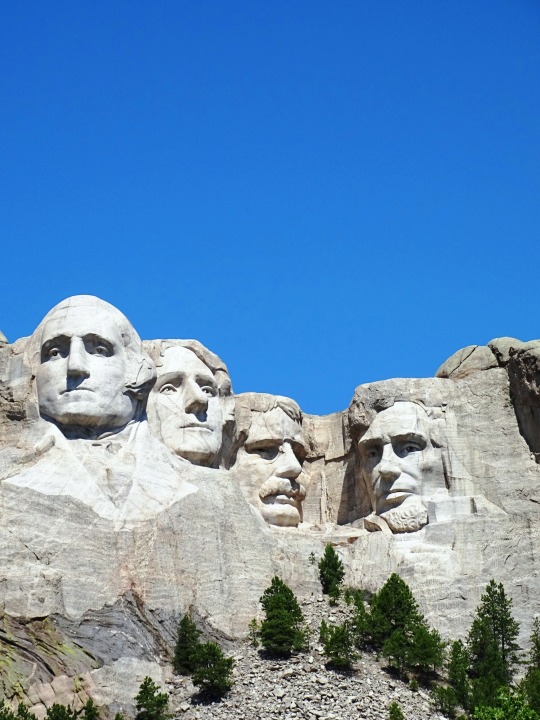







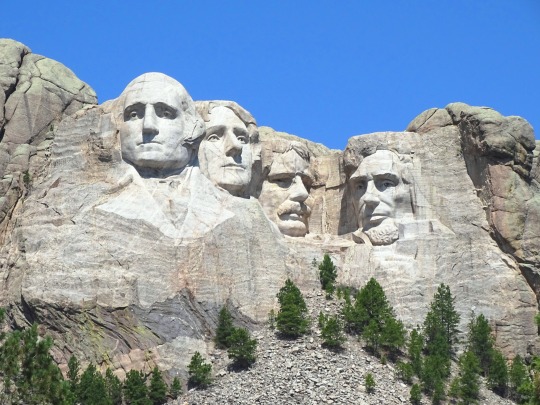
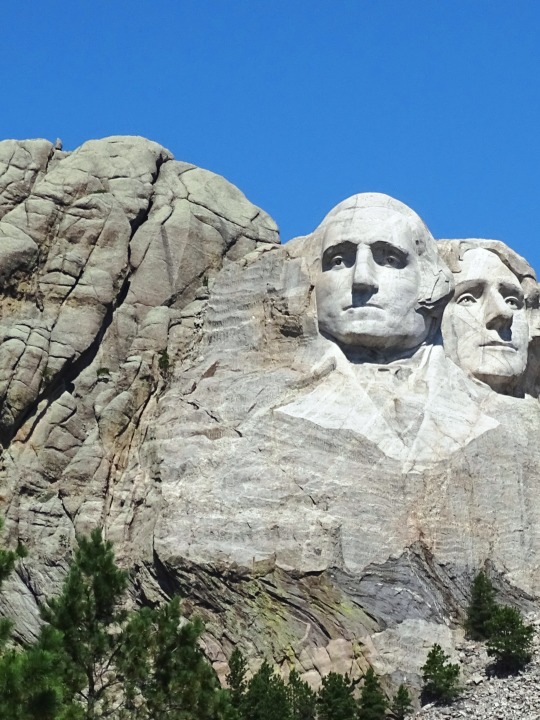
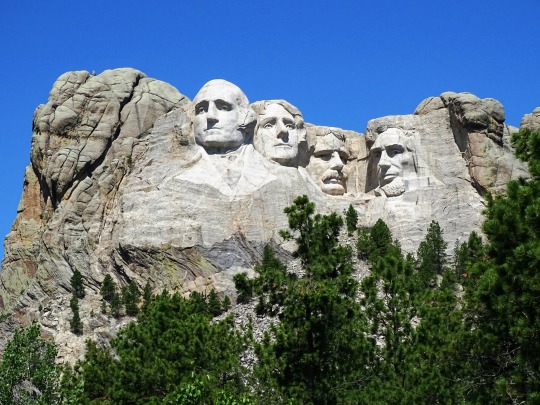
Thomas Jefferson Day
Thomas Jefferson, a founding father of the United States, was born on April 13, 1743. He held many roles and did much during the formative years of the country, including being the main author of the Declaration of Independence and the country’s third president. He wrote his own epitaph, highlighting what he most wanted to be remembered for: “HERE WAS BURIED THOMAS JEFFERSON AUTHOR OF THE DECLARATION OF AMERICAN INDEPENDENCE OF THE STATUTE OF VIRGINIA FOR RELIGIOUS FREEDOM AND FATHER OF THE UNIVERSITY OF VIRGINIA.”
Thomas Jefferson Day is a legal observance, but it is not a public holiday. A joint resolution approved on August 16, 1937, authorized the President of the United States to proclaim April 13 as “Thomas Jefferson’s Birthday” each year. The following year, President Franklin D. Roosevelt issued Presidential Proclamation 2276 to designate the day. Subsequent presidents have made similar proclamations. In Alabama, Thomas Jefferson’s birthday is officially celebrated on Presidents’ Day, along with George Washington’s.
Thomas Jefferson was born at the Shadwell plantation in Albemarle County, Virginia. His mother, Jane Randolph Jefferson, was from a prominent Virginia family, and his father, Peter Jefferson, was a planter and surveyor. After graduating from the College of William and Mary in 1762, he began studying law. As there weren’t official law schools at the time, Jefferson studied under a Virginia attorney. He began his work as a lawyer in 1767.
He married Martha Wayles Skelton on January 1, 1772. They had six children, but only two daughters lived to adulthood. Martha died in 1782 at the age of 33, and Jefferson never remarried. Besides keeping himself busy with politics throughout his life, he had many other interests, including gardening, architecture, music, and reading.
Jefferson was a member of colonial Virginia’s House of Burgesses between 1769 and 1775. He wrote “A Summary View of the Rights of British America” in 1774, which brought him to a wider audience. It said that the British Parliament didn’t have the right to use authority over the colonies. He was then selected to be a delegate to the Second Continental Congress. During this time, a panel of five was chosen to draft the Declaration of Independence. Of the five, which also included John Adams and Benjamin Franklin, Jefferson was chosen to write the draft. It was adopted on July 4, 1776.
In the fall of 1776, Jefferson resigned from the Continental Congress and was elected to the Virginia House of Delegates, which was formerly the House of Burgesses. In the late 1770s, he drafted the Virginia Statute for Religious Freedom. It was a notable forerunner to the First Amendment, and Jefferson thought it was one of his most substantial contributions, being important enough to include in his epitaph. After his time in the Virginia House of Delegates, he was Governor of Virginia from 1779 to 1781.
Following the Revolutionary War, Jefferson was part of Congress, which was known as the Congress of the Confederation at the time. He served from 1783 to 1784, and then became Minister to France in 1785, taking over the position that Benjamin Franklin had held. Because he was overseas, he was not able to attend the Constitutional Convention in 1787.
In the fall of 1789, Thomas Jefferson returned to America and became the first secretary of state. He helped found the Democratic-Republican Party, which opposed Alexander Hamilton’s Federalist Party, a party which wanted a strong central government with strong powers over the economy. Jefferson believed in a federal government with a limited role and believed in strong state and local governments.
He ran for president in 1796 and received the largest amount of votes after John Adams, so he became vice president. He ran against Adams again in 1800, and this time beat him. But his electoral vote count tied that of his running mate, Aaron Burr, and it was up to the House of Representatives to declare Jefferson as president. Because of this, the Twelfth Amendment, which stipulated separate voting for president and vice president, was ratified in 1804.
Jefferson served two terms as president and was in office from 1801 to 1809. During his first term, in 1803, he helped orchestrate the Louisiana Purchase, in which the size of the United States doubled with the purchase of land for $15 million from France. Jefferson sent Meriwether Lewis and William Clark on an expedition, known as the Corps of Discovery, to explore the new land. With this trip, information was gathered about geography, plant and animal life, and American Indian tribes. During his second term, which he secured with over 70% of the popular vote, Jefferson worked to keep the country out of the Napoleonic Wars. He implemented the Embargo of 1807 after merchant ships were getting harassed by France and Britain. It was an unpopular move, though, as it shut down American trade and hurt the economy; it was repealed in 1809. Jefferson did not run for a third term in 1808.
After his presidency, Jefferson retired to his home, Monticello. “Monticello” means “little mountain” in Italian. Indeed the home is located on a small mountain, on the edge of the Shadwell property where Jefferson was born. He had begun clearing the area for a home in 1768. He designed the home and gardens himself, and he continually worked on the house throughout his life. Art and gadgets filled the rooms, and he kept records of everything that went on at the plantation.
During his retirement years, he also helped found the University of Virginia. He helped design both its buildings and its curriculum. He also made sure it wasn’t a religious school and that there wasn’t a religious litmus test in order to attend it.
In 1815, he sold his 6,700 volume personal library to Congress, to replace the books that had been destroyed by the British in the War of 1812, when they burned the Capitol, which housed the Library of Congress at the time. Jefferson’s books became the foundation of what became the Library of Congress’s new library.
Although Jefferson is revered as one of the founding fathers, he is not a man without contradictions and shortcomings. He was a promoter of liberty and wrote “all men are created equal,” but was a slave owner throughout his whole life, during which he owned a total of about 600 slaves. He believed blacks were inferior humans and didn’t think coexistence would be possible if they were free. And although he never remarried after the loss of his beloved wife, Martha, he went on to father more children with one of his slaves, Sally Hemings. Some of the slaves that were in his bloodline were freed after his death, but most of his slaves were sold.
Thomas Jefferson passed away at Monticello at the age of 83, on July 4, 1826, on the 50th anniversary of the adoption of the Declaration of Independence. As if the date of his death wasn’t ironic enough, fellow founding father John Adams died on the same day. Thomas Jefferson died first, but Adams did not know that Jefferson had died, and his last words were “Thomas Jefferson survives.” Jefferson was buried at Monticello. Monticello was sold off following his death to pay debts, but a nonprofit organization acquired it in the twentieth century and it was opened to the public in 1954.
Source
#Thomas Jefferson Day#13 April 1743#anniversary#US history#born#birthday#Mount Rushmore National Memorial#controversial memorial#USA#controversy#Black Hills#South Dakota#Gutzon Borglum#summer 2019#original photography#tourist attraction#landmark#landscape#nature#NationalThomasJeffersonDay#Thomas Jefferson#US President#Teddy Roosevelt#Theodore Roosevelt#Abraham Lincoln#George Washington#North Central Region#Great Plains#travel#vacation
12 notes
·
View notes
Photo

Henry Clinton
Sir Henry Clinton (l. c. 1730-1795) was a British military officer who served as commander-in-chief of the British Army in the later stages of the American Revolutionary War (1775-1783). Having arrived in Boston in May 1775, he served in North America for most of the war, resigning his post in 1782 after the British defeat at the Siege of Yorktown.
The son of a British admiral, Clinton became a soldier at the age of 15 and saw action in Germany during the Seven Years' War. Thanks to his connections to British lords, he quickly rose through the ranks and was one of three British generals sent to Boston, Massachusetts, in 1775 to crush the American rebellion. Clinton was famously jealous, paranoid, and quick-tempered, traits that made it difficult for him to work with his fellow officers; still, he was well-educated in military matters and was among the most competent British tacticians of the war. As commander-in-chief, he led the British army at the Battle of Monmouth and the Siege of Charleston, but his lack of support for his second-in-command, Lord Charles Cornwallis, contributed to the British loss of the American South. After the war, he returned to England, where he received much of the blame for the British defeat before his death in December 1795.
Early Career
Little is known about Clinton's early life or childhood. He was likely born on 16 April 1730, although the time and location of his birth have been disputed; some scholars claim he was born in Newfoundland when his father was governor there, which, if true, would push his birth year back to 1732 at the earliest. What is known for certain, however, is that he came from a wealthy family of noble pedigree. His family was a cadet branch of the House of Lincoln, which could trace its earldom back to the reign of Elizabeth I of England (r. 1558-1603), and his uncle was related by marriage to the first Duke of Newcastle, who often lent his patronage to the Clinton family (Willcox, 4). Henry's father was British Admiral George Clinton (not to be confused with the future U.S. Vice President of the same name) and his mother was Anne Carle, a general's daughter. He also had two siblings, both sisters, who survived to adulthood.
Through the Duke of Newcastle's influence, Admiral Clinton was appointed governor of the Province of New York in 1741. The admiral did not arrive to take up his post until September 1743, taking his family with him. Henry, who was at most 13 when he arrived in New York, was probably educated at the Long Island school of Samuel Seabury, the future first bishop of the American Episcopal Church. In 1745, he began his military career when he enlisted in the New York militia as a lieutenant. The following year, his father procured for him a captain's commission, and he was sent to join the garrison of Louisbourg, a fort on the Saint Lawrence River that had recently been captured from the French. While stationed there, he was ambushed by a band of French and Native Americans, narrowly avoiding death by "stripping and jumping into the sea" (Willcox, 10).
In the summer of 1749, Clinton realized his prospects for military advancement in the colonies were limited, prompting him to return to England. With Newcastle's help, he was commissioned as a captain in the illustrious Coldstream Guards and, by 1758, he had risen to the rank of lieutenant colonel in the Grenadier Guards. By then, Europe was engulfed in the Seven Years' War (1756-1763) and Clinton's regiment was sent to Germany to bolster the Anglo-German army trying to prevent a French invasion of Hanover. He fought at the Battle of Villinghausen (16 July 1761) and Battle of Wilhelmsthal (24 July 1762), serving shoulder to shoulder with fellow British officers William Phillips and Lord Charles Cornwallis, both of whom would also become prominent generals in the American Revolution. He served as aide-de-camp to Charles William Ferdinand, future Duke of Brunswick, (the same Prussian general who would one day fight the French revolutionaries at the Battle of Valmy) in whose service Clinton was seriously wounded at Nauheim (30 August 1762).
Continue reading...
16 notes
·
View notes
Text



John Rattray, the Scottish Jacobite Surgeon and golfer was born on September 22nd 1707, at Craighall Castle, Rattray, Perthshire.Another extraordinary man from our history, it has become a 20th century cliché that the best business contacts and opportunities for professional promotions may be made on the golf course. For one 18th century Edinburgh surgeon, however, it was his golfing connections which literally saved his life.In 1731 he joined the Royal Company of Archers, the Sovereign’s bodyguard in Scotland to this day. He was a proficient archer winning the Archer’s Silver Bowl on four occasions. On two further occasions in 1735 and 1744 he won the Silver Arrow, presented each year to the champion archer.John Rattray also proved to be a proficient golfer, and was the winner of the first recorded open golf championship in April 1744, the month before he and several others formed The Honourable Company of Edinburgh Golfers, who put down on paper the first 13 rules of golf, which are more or less still adhered to, to this day. A contemporary poem ‘The Goff’ by Rev. Thomas Mathison published in 1743, the first poem devoted to the sport of golf, it mentions both Rattray, and the man who would later save him from being executed, Duncan Forbes of CullodenNorth from Edina eight furlongs and more,Lies that fam’d field, on Fortha’s sounding shore.Here Caledonian Chiefs for health resort,Confirm their sinews by the manly sport.Macdonald and unmatch’d Dalrymple plyTheir pond'rous weapons, and the green defy;Rattray for skill, and Corse for strength renown’d,Stewart and Lesly beat the sandy ground,And Brown and Alston, Chiefs well known to fame,And numbers more the Muse forbears to name.Gigantic Biggar here full oft is seen,Like huge behemoth on an Indian green;His bulk enormous scarce can 'scape the eyes,Amaz’d spectators wonder how he plies.Yea, here great Forbes, patron of the just,The dread of villains and the good man’s trust,When spent with toils in serving human kind,His body recreates, and unbends his mind.John’s father was an Episcopalian priest who became the Bishop of Dunkeld, then of Brechin and was elected Primus of the Scottish Episcopal Church. On his death in 1743 his elder son James became clan chief and inherited the estate. As the second son John had no such inheritance and he trained as a surgeon in Edinburgh by apprenticeship to the surgeon John Semple between 1728 and 1735, when he began surgical practice in Edinburgh.Following the Battle of Prestonpans, Rattray treated the wounded on the battlefield and joined the Jacobite army travelling with them throughout the campaign.By the time of the Battle of Culloden in April 1746 he had become the personal physician to Bonnie Prince Charlie. Rattray was captured after the battle but was freed after a personal plea to the Duke of Cumberland from Rattray’s old golf playing partner, Duncan Forbes of Culloden, who was Scotland’s most senior judge and a supporter of the government.His intercession on Rattray’s behalf secured his release from prison and saved him from certain hanging, the fate of most Jacobite officers. He was re-arrested by the Hanoverians in Edinburgh and held under house arrest until the spring of 1747. Thereafter he returned to life in Edinburgh practicing as a surgeon and winning the Silver Club of the honourable Company of Edinburgh Golfers in 1751. He continued to practice as a surgeon and died at his home in Leith Walk, Edinburgh, in July 1771.A relatively new statue and series of plaques honouring Rattray and the golfers now takes pride of place on Leith Links where the first golf tournament and meeting took place.
13 notes
·
View notes
Text
THE GRAND FINALE
WHO IS THE TRULY THE WORST FOUNDING FATHER?
THOMAS JEFFERSON VS HENRY LAURENS

Thomas Jefferson (April 13, 1743 – July 4, 1826) was an American statesman, diplomat, lawyer, architect, and philosopher who served as the third president of the United States from 1801 to 1809. Following the American Revolutionary War and prior to becoming the nation’s third president in 1801, Jefferson was the first United States secretary of state under George Washington and the nation’s second vice president under John Adams.
Starting in 1803, he promoted a western expansionist policy with the Louisiana Purchase and began the process of Indian tribal removal from the newly acquired territory.
Jefferson lived in a planter economy largely dependent upon slavery, and used slave labor for his household, plantation, and workshops. Over his lifetime he owned about 600 slaves.
During his presidency, Jefferson allowed the diffusion of slavery into the Louisiana Territory hoping to prevent slave uprisings in Virginia and to prevent South Carolina secession. In 1804, in a compromise on the slavery issue, Jefferson and Congress banned domestic slave trafficking for one year into the Louisiana Territory.
In 1819, Jefferson strongly opposed a Missouri statehood application amendment that banned domestic slave importation and freed slaves at the age of 25 on grounds it would destroy the union.
Jefferson never freed most of his slaves, and he remained silent on the issue while he was president.
Since the 1790s, Jefferson was rumored to have had children by his sister-in-law and slave Sally Hemings, known as the Jefferson-Hemings controversy. According to scholarly consensus…as well as oral history, Jefferson probably fathered at least six children with Hemings.
---
Henry Laurens (March 6, 1724 [O.S. February 24, 1723] – December 8, 1792) was an American Founding Father, merchant, slave trader, and rice planter from South Carolina who became a political leader during the Revolutionary War. A delegate to the Second Continental Congress, Laurens succeeded John Hancock as its president. He was a signatory to the Articles of Confederation and, as president, presided over its passage.
Laurens had earned great wealth as a partner in the largest slave-trading house in North America, Austin and Laurens. In the 1750s alone, this Charleston firm oversaw the sale of more than 8,000 enslaved Africans.
Laurens’ oldest son, Colonel John Laurens, was killed in 1782 in the Battle of the Combahee River, as one of the last casualties of the Revolutionary War. He had supported enlisting and freeing slaves for the war effort and suggested to his father that he begin with the 40 he stood to inherit. He had urged his father to free the family’s slaves, but although conflicted, Henry Laurens never manumitted his 260 slaves.
---
By popular vote, this final round will run for one full week
Please reblog so we can get the biggest sample size possible and figure who is TRULY the worst
#founding father bracket#worst founding father#founding fathers#amrev#brackets#polls#thomas jefferson#henry laurens#FINAL ROUND#the fact that i have books about both of these men on my bookshelves 💀
138 notes
·
View notes
Text


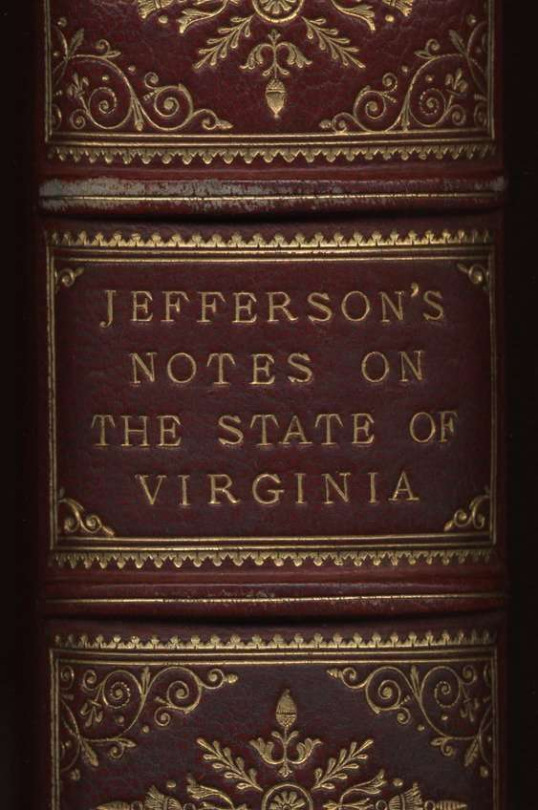
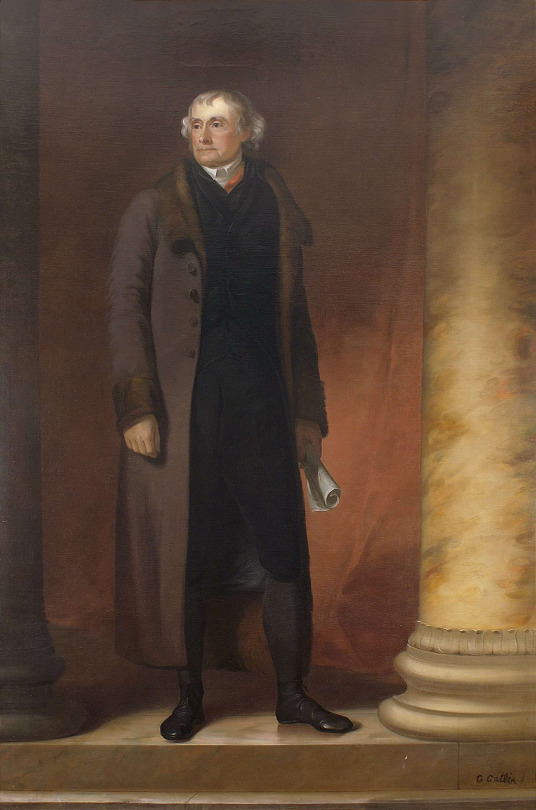

April 13, This Day in History: On this day in American history, Thomas Jefferson was born in 1743 at Shadwell, Virginia.
#americanhistory#born on this day#founding fathers#thomas jefferson#declaration of independence#american revolution
4 notes
·
View notes
Text
Hear me out
As a Hamilton and Magnus Chase fan, there's something that got me thinking. There's two names in common with these two things: Thomas Jefferson.
So I did some research and came to a conclusion. Thomas Jefferson (the 3rd President of the USA) is probably Thomas Jefferson Jr's (the one from Magnus Chase) father.
Here are the dates:
Thomas Jefferson was born on the 13 of april of 1743 and died on the 4 of jully of 1826.
Thomas Jefferson Jr fought during the American Civil War.
The American Civil War happened from 12 april 1861 – 9 april 1865.
To join the army, you had to be (minimum) 18, although many of the soldiers were younger.
So, thinking that TJ joined the army as an adult, he could've been Thomas Jefferson's son. If he joined when he was 18 or less, then his grandson.
What do y'all think?
5 notes
·
View notes
Text
Thomas Jefferson: Architect of American Ideals
Thomas Jefferson, one of America’s Founding Fathers, remains an iconic figure whose legacy continues to shape the nation’s identity and ideals. Born on April 13, 1743, in Shadwell, Virginia, Jefferson’s contributions span politics, philosophy, and even architecture, leaving an indelible mark on American history.
Early Life and Education
Jefferson’s upbringing in colonial Virginia laid the…
#american history#architect of american democracy#architect of american ideals#architect of liberty#complex legacy of thomas jefferson#declaration of independence#early life of thomas jefferson#jefferson: architect of american liberty#legacy of thomas jefferson#people of influence#presidency of thomas jefferson#president thomas jefferson#real story of thomas jefferson#the architect of democracy thomas jefferson#thomas jefferson#thomas jefferson biography#thomas jefferson story
0 notes
Text
Gezicht op de Van Cittersstraat bij de hoek van de Hofstedestraat, 16 april 1926.
Jhr. Frédéric van Citters (Rheden, 13 juni 1839 – Ginneken, 12 november 1922) was een Nederlands burgemeester.
Hij begon zijn burgemeesterscarrière in 1867 te Rhoon en in 1871 werd hij burgemeester van Bodegraven. In 1879 volgde zijn benoeming tot burgemeester van Delfshaven wat hij zou blijven tot Delfshaven in 1886 opging in de gemeente Rotterdam. Daarna was hij tot 1910 wethouder in Rotterdam.
Petrus Hofstede (Zuidlaren, 16 april 1716 - Rotterdam, 27 november 1803) was een Nederlands gereformeerd theoloog en predikant. Hij nam vol overgave deel aan een groot aantal theologische discussies en conflicten, waarin hij een traditioneel standpunt innam, tolerantie van minderheden afwees en uitging van de band tussen de gereformeerde kerk, de Republiek en het Oranjehuis.
Petrus Hofstede was een zoon van de predikant Johannes Hofstede en Maria Abbring. Hij studeerde filosofie in Groningen, maar moest de stad verlaten nadat hij anoniem een satire had gepubliceerd op hen die alleen in naam studeerden, de pseudo-studiosus hodiernus (de hedendaagse schijnstudent). Hij vervolgde zijn studies aan de Universiteit van Franeker. Hij was predikant te Anjum (1739-1743), te Steenwijk (1743-1745), te Oostzaandam (1745-1749) en in Rotterdam tot aan zijn overlijden in 1803. Hier was hij vanaf 1770 ook hoogleraar aan de Illustere School. Met zijn even rechtzinnige Rotterdamse collega Johannes Habbema richtte hij in 1774 het theologische maandblad De Nederlandsche Bibliotheek op. Na een heftige aanval op de Utrechtse hoogleraar Rijklof Michaël van Goens werd in 1775 de verkoop in Utrecht door de Staten verboden. Na zijn dood werd hij begraven in de Laurenskerk. Zijn grafzerk is gespaard gebleven bij het bombardement op Rotterdam in de meidagen van 1940, en is geplaatst in een kapel van de Noorderzijbeuk.
De foto is gemaakt door de Fototechnische Dienst Rotterdam en komt uit het Stadsarchief Rotterdam. De informatie komt van Wikipedia.
2023

0 notes
Text
Today in History: Today is Saturday, April 13, the 104th day of 2024.
By The Associated Press
Today’s Highlight in History:
On April 13, 1964, Sidney Poitier became the first Black performer to win an Academy Award for best actor or best actress with his performance in “Lilies of the Field.”
On this date:
In 1743, the third president of the United States, Thomas Jefferson, was born in Shadwell in the Virginia Colony.
In 1861, at the start of the Civil War,…

View On WordPress
0 notes
Text
Thomas Jefferson, the third President of the United States
On April 13, 1743, Thomas Jefferson was born on his father’s plantation of Shadwell in central Virginia. This date marked the beginning of a life that would have a profound impact on the history of the United States. Jefferson’s birthplace, nestled along the Rivanna River in the Piedmont region at the foothills of the Blue Ridge Mountains, would shape his upbringing and influence his beliefs and…

View On WordPress
0 notes
Photo
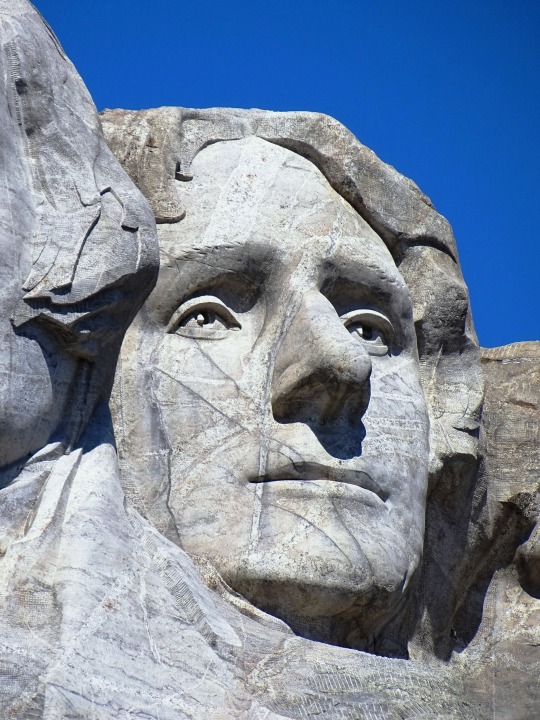
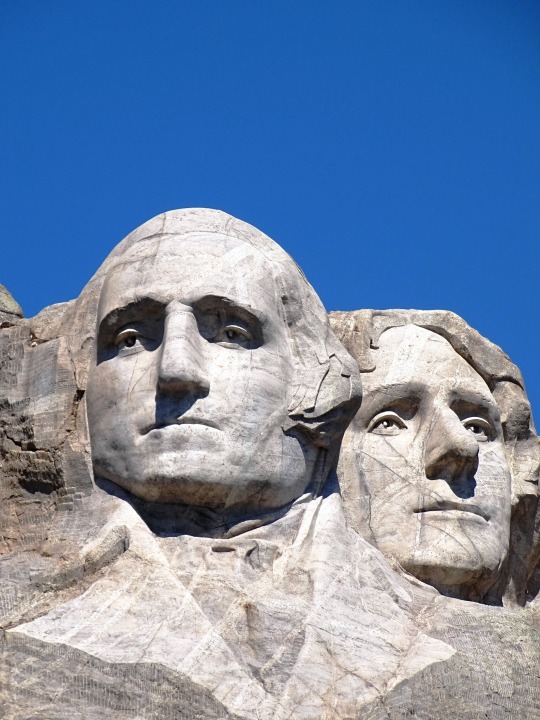
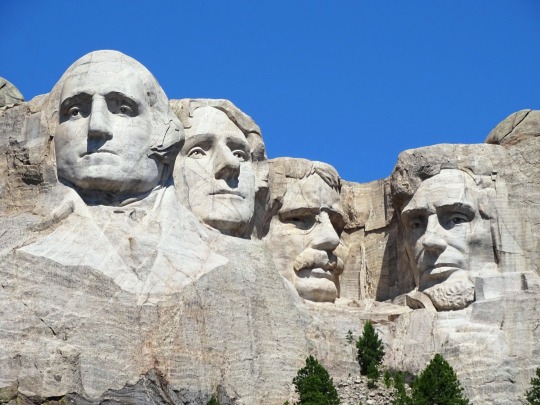

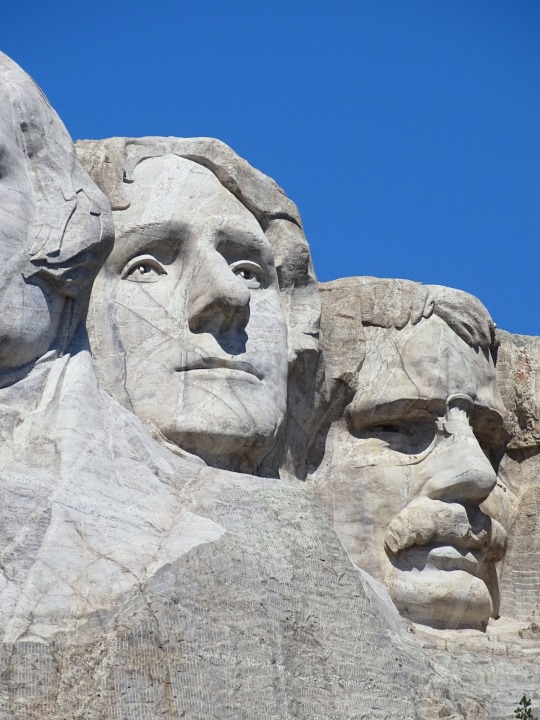

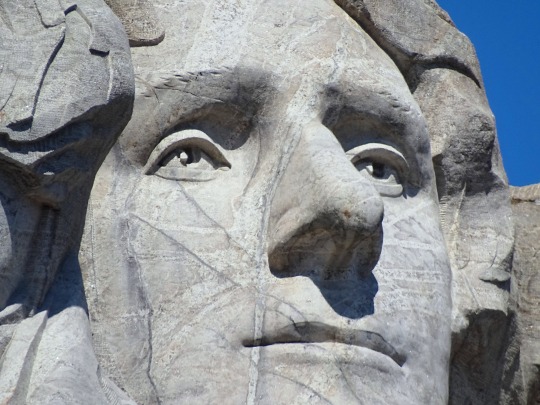
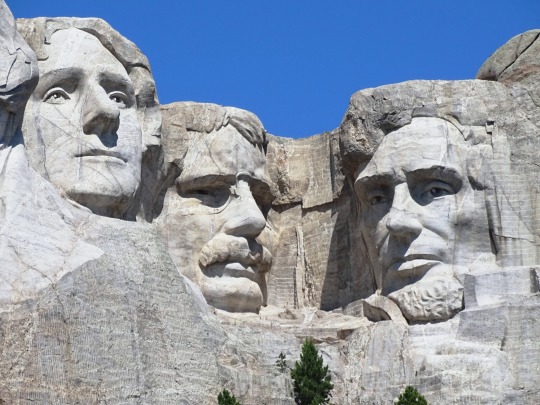
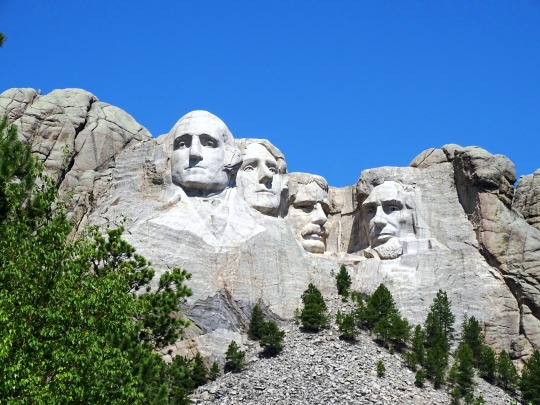

Thomas Jefferson Day
Thomas Jefferson, a founding father of the United States, was born on April 13, 1743. He held many roles and did much during the formative years of the country, including being the main author of the Declaration of Independence and the country’s third president. He wrote his own epitaph, highlighting what he most wanted to be remembered for: “HERE WAS BURIED THOMAS JEFFERSON AUTHOR OF THE DECLARATION OF AMERICAN INDEPENDENCE OF THE STATUTE OF VIRGINIA FOR RELIGIOUS FREEDOM AND FATHER OF THE UNIVERSITY OF VIRGINIA.”
Thomas Jefferson Day is a legal observance, but it is not a public holiday. A joint resolution approved on August 16, 1937, authorized the President of the United States to proclaim April 13 as “Thomas Jefferson’s Birthday” each year. The following year, President Franklin D. Roosevelt issued Presidential Proclamation 2276 to designate the day. Subsequent presidents have made similar proclamations. In Alabama, Thomas Jefferson’s birthday is officially celebrated on Presidents’ Day, along with George Washington’s.
Thomas Jefferson was born at the Shadwell plantation in Albemarle County, Virginia. His mother, Jane Randolph Jefferson, was from a prominent Virginia family, and his father, Peter Jefferson, was a planter and surveyor. After graduating from the College of William and Mary in 1762, he began studying law. As there weren’t official law schools at the time, Jefferson studied under a Virginia attorney. He began his work as a lawyer in 1767.
He married Martha Wayles Skelton on January 1, 1772. They had six children, but only two daughters lived to adulthood. Martha died in 1782 at the age of 33, and Jefferson never remarried. Besides keeping himself busy with politics throughout his life, he had many other interests, including gardening, architecture, music, and reading.
Jefferson was a member of colonial Virginia’s House of Burgesses between 1769 and 1775. He wrote “A Summary View of the Rights of British America” in 1774, which brought him to a wider audience. It said that the British Parliament didn’t have the right to use authority over the colonies. He was then selected to be a delegate to the Second Continental Congress. During this time, a panel of five was chosen to draft the Declaration of Independence. Of the five, which also included John Adams and Benjamin Franklin, Jefferson was chosen to write the draft. It was adopted on July 4, 1776.
In the fall of 1776, Jefferson resigned from the Continental Congress and was elected to the Virginia House of Delegates, which was formerly the House of Burgesses. In the late 1770s, he drafted the Virginia Statute for Religious Freedom. It was a notable forerunner to the First Amendment, and Jefferson thought it was one of his most substantial contributions, being important enough to include in his epitaph. After his time in the Virginia House of Delegates, he was Governor of Virginia from 1779 to 1781.
Following the Revolutionary War, Jefferson was part of Congress, which was known as the Congress of the Confederation at the time. He served from 1783 to 1784, and then became Minister to France in 1785, taking over the position that Benjamin Franklin had held. Because he was overseas, he was not able to attend the Constitutional Convention in 1787.
In the fall of 1789, Thomas Jefferson returned to America and became the first secretary of state. He helped found the Democratic-Republican Party, which opposed Alexander Hamilton’s Federalist Party, a party which wanted a strong central government with strong powers over the economy. Jefferson believed in a federal government with a limited role and believed in strong state and local governments.
He ran for president in 1796 and received the largest amount of votes after John Adams, so he became vice president. He ran against Adams again in 1800, and this time beat him. But his electoral vote count tied that of his running mate, Aaron Burr, and it was up to the House of Representatives to declare Jefferson as president. Because of this, the Twelfth Amendment, which stipulated separate voting for president and vice president, was ratified in 1804.
Jefferson served two terms as president and was in office from 1801 to 1809. During his first term, in 1803, he helped orchestrate the Louisiana Purchase, in which the size of the United States doubled with the purchase of land for $15 million from France. Jefferson sent Meriwether Lewis and William Clark on an expedition, known as the Corps of Discovery, to explore the new land. With this trip, information was gathered about geography, plant and animal life, and American Indian tribes. During his second term, which he secured with over 70% of the popular vote, Jefferson worked to keep the country out of the Napoleonic Wars. He implemented the Embargo of 1807 after merchant ships were getting harassed by France and Britain. It was an unpopular move, though, as it shut down American trade and hurt the economy; it was repealed in 1809. Jefferson did not run for a third term in 1808.
After his presidency, Jefferson retired to his home, Monticello. “Monticello” means “little mountain” in Italian. Indeed the home is located on a small mountain, on the edge of the Shadwell property where Jefferson was born. He had begun clearing the area for a home in 1768. He designed the home and gardens himself, and he continually worked on the house throughout his life. Art and gadgets filled the rooms, and he kept records of everything that went on at the plantation.
During his retirement years, he also helped found the University of Virginia. He helped design both its buildings and its curriculum. He also made sure it wasn’t a religious school and that there wasn’t a religious litmus test in order to attend it.
In 1815, he sold his 6,700 volume personal library to Congress, to replace the books that had been destroyed by the British in the War of 1812, when they burned the Capitol, which housed the Library of Congress at the time. Jefferson’s books became the foundation of what became the Library of Congress’s new library.
Although Jefferson is revered as one of the founding fathers, he is not a man without contradictions and shortcomings. He was a promoter of liberty and wrote “all men are created equal,” but was a slave owner throughout his whole life, during which he owned a total of about 600 slaves. He believed blacks were inferior humans and didn’t think coexistence would be possible if they were free. And although he never remarried after the loss of his beloved wife, Martha, he went on to father more children with one of his slaves, Sally Hemings. Some of the slaves that were in his bloodline were freed after his death, but most of his slaves were sold.
Thomas Jefferson passed away at Monticello at the age of 83, on July 4, 1826, on the 50th anniversary of the adoption of the Declaration of Independence. As if the date of his death wasn’t ironic enough, fellow founding father John Adams died on the same day. Thomas Jefferson died first, but Adams did not know that Jefferson had died, and his last words were “Thomas Jefferson survives.” Jefferson was buried at Monticello. Monticello was sold off following his death to pay debts, but a nonprofit organization acquired it in the twentieth century and it was opened to the public in 1954.
Source
#Thomas Jefferson Day#13 April 1743#280th anniversary#US history#born#birthday#Mount Rushmore National Memorial#controversial memorial#USA#controversy#Black Hills#South Dakota#Gutzon Borglum#summer 2019#original photography#tourist attraction#landmark#landscape#nature#NationalThomasJeffersonDay#Thomas Jefferson#US President#Teddy Roosevelt#Theodore Roosevelt#Abraham Lincoln#George Washington#North Central Region#Great Plains
0 notes
Note
Oh yea also ITS TIME
Today birthday wise it's Thomas Jefferson's birthday (April 13, 1743)
And Japan concluded a neutrality pact with the Soviet Union in World War II.
And the national days (in the US at least) are
National Peach Cobbler Day, National Scrabble Day, National Borinqueneers Day and National Make Lunch Count Day!
(It's also apparently homestuck day but idk anything about it)
Anyway have a RADICAL Thursday and don't forget, if a stranger offers you free candy make sure the have the type you like!
(I love you platonically for these fun facts istg.)
1 note
·
View note
Text
Who is the worst founding father?
Round 4: Thomas Jefferson vs John Jay vs Edmund Randolph

Thomas Jefferson (April 13, 1743 – July 4, 1826) was an American statesman, diplomat, lawyer, architect, philosopher, and Founding Father who served as the third president of the United States from 1801 to 1809. Jefferson was the primary author of the Declaration of Independence. Following the American Revolutionary War and prior to becoming the nation’s third president in 1801, Jefferson was the first United States secretary of state under George Washington and then the nation’s second vice president under John Adams.
Starting in 1803, he promoted a western expansionist policy with the Louisiana Purchase and began the process of Indian tribal removal from the newly acquired territory.
In confidential talks with French consul Joseph Létombe, Jefferson attacked President John Adams and predicted [he] would serve only one term, encouraged France to invade England, and advised Létombe to stall any American envoys sent to Paris by instructing him to “listen to them and then drag out the negotiations at length and mollify them by the urbanity of the proceedings." This toughened the tone that the French government adopted toward the Adams administration.
Jefferson lived in a planter economy largely dependent upon slavery, and used slave labor for his household, plantation, and workshops. Over his lifetime he owned about 600 slaves.
During his presidency, Jefferson allowed the diffusion of slavery into the Louisiana Territory hoping to prevent slave uprisings in Virginia and to prevent South Carolina secession. In 1804, in a compromise on the slavery issue, Jefferson and Congress banned domestic slave trafficking for one year into the Louisiana Territory.
In 1819, Jefferson strongly opposed a Missouri statehood application amendment that banned domestic slave importation and freed slaves at the age of 25 on grounds it would destroy the union.
Jefferson never freed most of his slaves, and he remained silent on the issue while he was president.
Since the 1790s, Jefferson was rumored to have had children by his sister-in-law and slave Sally Hemings, known as the Jefferson-Hemings controversy. According to scholarly consensus…as well as oral history, Jefferson probably fathered at least six children with Hemings.
---
John Jay (December 12, 1745 – May 17, 1829) was an American statesman, patriot, diplomat, abolitionist, signatory of the Treaty of Paris, and a Founding Father of the United States. He served as the second governor of New York and the first chief justice of the United States. He directed U.S. foreign policy for much of the 1780s and was an important leader of the Federalist Party after the ratification of the United States Constitution in 1788.
Jay served as the governor of New York from 1795 to 1801. Although he successfully passed gradual emancipation legislation as governor of the state, he owned five slaves as late as 1800. In the waning days of President John Adams’ administration, Jay was confirmed by the Senate for another term as chief justice, but he declined the position and retired to his farm in Westchester County, New York.
John Jay himself purchased, owned, rented out and manumitted at least 17 slaves during his lifetime. He is not known to have owned or invested in any slave ships. In 1783, one of Jay’s slaves, a woman named Abigail, attempted to escape in Paris, but was found, imprisoned, and died soon after the illness. Jay was irritated by her escape attempt, suggesting that she be left in prison for some time. To his biographer Walter Stahr, this reaction indicates that “however much [Jay] disliked slavery in the abstract, he could not understand why one of his slaves would run away.”
---
Edmund Jennings Randolph (August 10, 1753 – September 12, 1813) was a Founding Father of the United States, attorney, and the 7th Governor of Virginia. As a delegate from Virginia, he attended the Constitutional Convention and helped to create the national constitution while serving on its Committee of Detail. He was appointed the first United States Attorney General by George Washington and subsequently served as the second Secretary of State during the Washington administration.
A scandal involving an intercepted French message led to Randolph’s resignation as Secretary of State in August 1795. Randolph had been tasked with maintaining friendly relations with France. The British Navy had intercepted correspondence from the French minister Joseph Fauchet to his superiors and turned it over to Washington, who was dismayed that the letters reflected contempt for the United States and that Randolph had been primarily responsible. The letters implied that Randolph had exposed the inner debates in the cabinet to France and had told it that the administration was hostile to the country. At the very least, Elkins and McKitrick conclude, there “was something here profoundly disreputable to the government’s good faith and character.”
While residing in Pennsylvania, the 6-month residency deadline for [his slaves] approached. Attorney General Edmund Randolph’s slaves had obtained their freedom under the 1780 law, and Randolph was advising Washington (through Lear’s letters) on how to prevent the eight [slaves] from similarly obtaining theirs.
#founding father bracket#worst founding father#founding fathers#amrev#brackets#polls#thomas jefferson#john jay#edmund randolph
22 notes
·
View notes
Text
Thomas Jefferson day — Whizzbang1698
Thomas Jefferson Day takes place annually on 13 April. It Commemorates the anniversary of the the birth of American statesman, diplomat, lawyer, architect, and Founding Father Thomas Jefferson who was born 13 April 1743, and also served as the third president of the United States from 1801 to 1809. Previously, he had served as the […]
Thomas Jefferson day — Whizzbang1698
View On WordPress
0 notes
Text
History
April 13
Birthday - Thomas Jefferson (1743-1826) was born in Albermarle County, Virginia. He was an author, inventor, lawyer, politician, architect, and one of the finest minds of the 1700's. He authored the American Declaration of Independence and later served as the 3rd U.S. President from 1801 to 1809. He died on July 4, 1826, the same day as his old friend and one-time political rival John Adams.
0 notes
Text
"A character for probity and honor": the story of Theodore Middleton [Part 4]
Continued from part 3
Reprinted from my History Hermann WordPress blog.
© 2016-2023 Burkely Hermann. All rights reserved.
Notes
[1] He also said that in his present living area he was "personally acquainted with the Rev. Spencer Mitchell, George Semmes, Henry A. Callis, Henry Gantt, John Addison, Bazil Hatten, Notley Maddox...Henry Tolson Esqrs...Judge Key, and the Hon’le B. J. Semmes."
[2] Henry Wright Newman, "Captain Theodore Middleton" within The Maryland Semmes and Kindred Families (Baltimore: Maryland Historical Society, 1956), 282. Later one of the Middleton family would marry into the Boone family.
[3] Ibid.
[4] Mortgage between Theodore Middleton and Robert Bench, Aug 12, 1812, Prince George's County Court, Land Records, Liber JRM 15, p. 283, 284 [MSA CE 65-44]. Courtesy of mdlandrec.net.
[5] Deed between Theodore Middleton, Josiah Moore, Thomas Bunch, and Mordecai Ridgeway, Oct. 5, 1814, Prince George's County Court, Land Records, Liber JRM 16, p. 208, 209, 210, 211 [MSA CE 65-45]. Courtesy of mdlandrec.net.
[6] Deed between Theodore Middleton and Stanislaus Hoxton, May 22, 1815, Prince George's County Court, Land Records, Liber JRM 16, p. 362, 363 [MSA CE 65-45]. Courtesy of mdlandrec.net.
[7] Deed between Theodore Middleton and Henry O. Middleton, Mar. 14, 1820, Prince George's County Court, Land Records, Liber AB 1, p. 412, 413 [MSA CE 65-48]. Courtesy of mdlandrec.net.
[8] Deed between Theodore Middleton and George Semmes, Aug. 29, 1820, Prince George's County Court, Land Records, Liber AB 1, p. 413, 414 [MSA CE 65-48]. Courtesy of mdlandrec.net.
[9] Deed between Theodore Middleton and Sarah Folson, Sept. 13, 1826, Prince George's County Court, Land Records, Liber AB 4, p. 342, 343 [MSA CE 65-51]. Courtesy of mdlandrec.net.
[10] Originally he was paid $2,050 for such land in 1820, and $2,000 in 1826.
[11] [Deed involving Thomas Middleton and Catherine Plajay, Mar. 13, 1743, Prince George's County, Land Records, Liber BB 1, p. 103, 104, 105 [MSA CE 65-12]. Courtesy of mdlandrec.net.
[12] Bill of sale by Theodore Middleton to Francis John Lobson, April 3, 1820, Prince George's County Court, Land Records, Liber AB 1, p. 264 [MSA CE 65-48]. Courtesy of mdlandrec.net.
[13] "Average Price of Slaves, New Orleans, 1804-1862" within Edward Baptist, The Half Has Never Been Told: Slavery and the Making of American Capitalism (New York: Basic Books, 2014), 174, citing the New Orleans Sale Sample, 1805-1862, which was compiled by Robert W. Fogel and Stanley L. Engerman.
[14] Bill of Sale from Gen. Semmes and Francis Tolson to Theodore Middleton, November 12, 1821, Prince George's County Court, Land Records, Liber AB 2, p. 33 [MSA CE 65-49]. Courtesy of mdlandrec.net.
[15] Bill of sale involving Thomas Middleton and John Lawrence, Feb. 24, 1743, Prince George's County, Land Records, Liber BB 1, p. 85, 86 [MSA CE 65-12]. Courtesy of mdlandrec.net; Bill of sale involving Thomas Middleton and James Gibbs, May 17, 1744, Prince George's County, Land Records, Liber BB 1, p. 130, 131 [MSA CE 65-12]. Courtesy of mdlandrec.net; Bill of sale involving Thomas Middleton and James Gibbs, May 17, 1744, Prince George's County, Land Records, Liber BB 1, p. 131, [MSA CE 65-12]. Courtesy of mdlandrec.net.
[16] Pension of Erasmus Gantt, 1832, Survivor's Pension Application File, S.10.727, Revolutionary War Pension and Bounty-Land Warrant Application Files, National Archives, NARA M804, Records of the Department of Veterans Affairs, Record Group 15. Courtesy of Ancestry.com and HeritageQuest.
[17] Pension of John Boone, 1832, Pension Application File, S. 8076, Revolutionary War Pension and Bounty-Land Warrant Application Files, National Archives, NARA M804, Records of the Department of Veterans Affairs, Record Group 15. Courtesy of Ancestry.com and HeritageQuest.
[18] Pension of Hester Hill for benefits of Henry Hill her husband, 1856, Pension Application File, W. 14,907, Revolutionary War Pension and Bounty-Land Warrant Application Files, National Archives, NARA M804, Records of the Department of Veterans Affairs, Record Group 15. Courtesy of Ancestry.com and HeritageQuest.
[19] Middleton's pension "includes a certificate by Mountjoy Bayly of the District of Columbia dated 27 Feb 1833, signed as shown, certifying Middleton’s service in words almost identical to those in the above application. On 11 March 1833 Theodore Middleton applied to have his pension payable in Washington, DC. A note by W. H. Middleton dated 25 Oct 1855 asks that the Commissioner of Pensions allow examination of the papers pertaining to his father, Theodore Middleton."
[20] Reportedly there is information about him within this article and this newspaper although that cannot be confirmed.
[21] Newman, "Captain Theodore Middleton," 283.
[22] "Reports of Traveling Agents," Maryland Colonization Journal, Baltimore, Dec. 1856, Vol. 8, no. 19, 304. He is reportedly mentioned on pages 97 and 376 at least of Daniel Boone Lloyd's The Middletons and kindred families of southern Maryland.
#notes#maryland#us history#pensions#washington dc#maryland history#american revolution#revolutionary war
0 notes